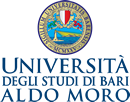La motivazione all'apprendimento dell’italiano L2 nella prospettiva della teoria dei sistemi dinamici complessi
DOI:
https://doi.org/10.15162/1970-1861/1535Parole chiave:
Motivazione, Italiano L2, Teoria della complessitàAbstract
Many studies suggest that the motivation - as well as the other constitutive factors of language acquisition and teaching - can be interpreted within the epistemological framework of complexity theory (TC) (Hiver and Papi 2019; Dörnyei et all.2015; Ortega and Han 2017; Larsen-Freeman 1997, 2006; Martari 2021). In the first part of this paper, we describe the motivation in second language acquisition as a dynamic model. Secondly, we briefly observe some key elements of CT in relation to applied linguistics and educational linguistics. In the third part, we analyze a case study evaluating the learning experience of Italian as a second language described by seven adult learners during structured interviews. Unlike other research on this topic, the aim of this study is to reflect on the complex dimension of motivational processes in relation to the following elements of CT: a) the ecosystemic and dynamic vision of motivation to learn; b) the complex relation of self-similarity and the feedback loops; c) the emergence of the motivation to learn from the interaction between different levels of linguistic and social perception of self. Through the analysis of the interviews we observe how language learning is constantly set in an ecological framework in which learning and acquisition are in relation with the communicative (cultural, social and affective) ecosystem of the human subject.
Riferimenti bibliografici
Al-Hoorie A.H., 2018, “The L2 motivational self system: A meta-analysis”, in Studies in Second Language Learning and Teaching 8 (4), pp. 721-754.
Atkinson D., 2002, “Toward a Sociocognitive Approach to Second Language Acquisition”, in The Modern Language Journal, 86 (4), pp. 525-545.
Baba K., Nitta R., 2014, “Phase Transitions in Development of Writing Fluency From a Complex Dynamic Systems Perspective”, in Language Learning, 64 (1), pp. 1-35.
Balboni P.E., 2014, “Motivazione ed educazione linguistica: dal bisogno di comunicare all’emozione di imparare”, in Landolfi L. (a cura di), Crossroads: Languages in (E)motion, Napoli, City University Press, 165-178.
Balboni P.E., 2015, Le sfide di Babele. Insegnare le lingue nelle società complesse, IV ed. Torino, UTET.
Balboni P.E., 2022, Thesaurus di linguistica educativa. Guida, testi, video, Venezia, Ca Foscari.
Barab S.A, Cherkes-Julkowski M., Swenson R., Garrett S., Shaw R.E., Young M., 1999, “Principles of self-organization: learning as participation in autocatakinetic systems”, in The Journal of the Learning Sciences, 8, pp. 349-390.
Bateson G., 1976, tr. it., Verso un’ecologia della mente, Milano, Adelphi.
Brown D., 2004, “Research Methods for Applied Linguistics: Scope, Characteristics, and Standards”, in Davies A. e Elder C., Handbook of Applied Linguistics, Oxford, Blackwell, pp. 476-500.
Buccino G., Mezzadri M., 2013, “La teoria dell’embodiment e il processo di apprendimento e insegnamento di una lingua”, in Entymema, VIII, pp. 5-20.
Cook G., Seidlhofer B. (a cura di), 1995, Principles and practice in applied linguistics, Oxford, Oxford University Press.
De Boot K., Lowie W., Verspoor M., 2007, “A dynamic systems theory approach to second language acquisition”, in Bilingualism Language and Cognition, 10(1), pp. 7-21.
Dörnyei Z. e Otto I., 1998, “Motivation in action: A process model of L2 motivation”, in Working Papers in Applied Linguistics, 47, pp. 173-210.
Dörnyei Z., 2005, The psychology of the language learner. Individual differences in second language acquisition, New York & London, Routledge.
Dörnyei Z., 2010, “Researching motivation: From integrativeness to the ideal L2 self”, in Hunston S., Oakey D. (eds.), Introducing applied linguistics: Concepts and skills, London, Routledge, pp. 74-83.
Dörnyei Z., MacIntyre P.D., Henry A. (a cura di), 2015, Motivational dynamics in language learning, Bristol, Multilingual Matter.
Dornyei Z., Ushioda E., 2009, Motivation, language identity and the self, Bristol, Multilingual Matters.
Ellis N.C., 1998, “Emergentism, Connectionism and Language Learning”, in Language Learning, 48 (4), pp. 631-664.
Ellis N.C., 2002, “Frequency effects in language processing: A review with implications for theories of implicit and explicit language acquisition”, in Studies in Second Language Acquisition, 24(2), pp. 143-188.
Ellis R., 2015, Understanding Second Language Acquisition, II edition, Oxford, Oxford University Press.
Evans D.R., Larsen-Freeman D., 2020, “Bifurcations and the Emergence of L2 Syntactic Structures in a Complex Dynamic System”, in Frontiers in Psychology, 11, pp. 1-12.
Feyerabend P., 1979, tr. It. Contro il metodo. Abbozzo di una teoria anarchica della conoscenza, Milano, Feltrinelli.
Fogal G.G., 2020, “Investigating Variability in L2 Development: Extending a Complexity Theory Perspective on L2 Writing Studies and Authorial Voice”, in Applied Linguistics, 41:4, pp. 575–600.
Fogal G.G., Verspoor M.H., 2020, Complex Dynamic Systems Theory and L2 Writing Development, Amsterdam, Benjamins.
Frasnedi F., 1999, La lingua le pratiche la teoria. Le botteghe dell’agilità linguistica, Bologna, CLUEB.
Gineprini M., Roncallo A., 2001. La scrittura emergente. La scuola come laboratorio di nuovi scenari dello scrivere, Catanzaro, Rubettino.
GISCEL, 1975, “Dieci tesi per una educazione linguistica democratica”, in https://giscel.it/dieci-tesi-per-leducazione-linguistica-democratica/ (ultimo accesso maggio 2022).
Graham S., 1994, “Classroom motivation from an attributional perspective”, in O'Neil H.F., Drillings M. (Eds.), Motivation: Theory and research, Hillsdale, NJ: Lawrence Erlbaum, pp. 31-48.
Haugen E., 1972, The Ecology of Language, Stanford, University Press.
Hiver P., Al-Hoorie A.H., 2021, “Transdisciplinary research methods and complexity theory in applied linguistics: introduction to the special issue”, in IRAL- International Review of Applied Linguistics in Language Teaching, 60(1), pp. 1–6.
Hiver P., Al-Hoorie A.H., Evans R., 2021, “Complex Dynamic Systems Theory in language learning: a scoping review of 25 years of research”, in Studies in Second Language Acquisition, pp. 1-29.
Hiver P., Papi M., 2019, “Complexity Theory and L2 Motivation”, in Lamb M., Csizér K., Henry A., Ryan S. (eds), Palgrave handbook of motivation for language learning Basingstoke, Palgrave Macmillan, pp. 117-137.
Hopper P., 1987, “Emergent Grammar”, in Proceedings of the Annual Meeting of the Berkeley Linguistics Society, 13, pp. 139-157.
Howe M.L., Lewis M.D., 2005, “The importance of dynamic systems approaches for understanding development”, in Developmental Review, 25(3-4), pp. 247-251.
Johnson S., 2004, La nuova scienza dei sistemi emergenti, tr. it., Milano, Garzanti.
Keller R., 1994, On Language Change: The Invisible Hand in Language, London/New York, Routledge.
Kramsch C., 2008, “Ecological perspectives on foreign language education”, in Language teaching, 41(3), pp. 389-408.
Krashen S.D., 1982, Principles and Practice in Second Language Acquisition, Oxford, Pergamon.
Kuhn T. S., 1979, tr. It., Il paradigma delle rivoluzioni scientifiche, Torino, Einaudi.
Kumaravadivelu B., 1994, “The postmethod condition: (E)merging strategies for second/foreign language teaching”, in TESOL Quarterly, 28, pp. 27-48.
Kumaravadivelu B., 2006, Understanding Language Teaching. From Method to Postmethod, N.J., Mahwah, Lawrence Erlbaum.
Larsen-Freeman D. 2017, “Complexity Theory: The lesson continue”, in Ortega, Han 2017, pp. 11-50.
Larsen-Freeman D., 1997, “Chaos/complexity science and second language acquisition”, in Applied Linguistics, 18, 141-165.
Larsen-Freeman D., 2006, “The Emergence of Complexity, Fluency, and Accuracy in the Oral and Written Production of Five Chinese Learners of English”, in Applied Linguistics, 27 (4), pp. 590-619.
Larsen-Freeman D., 2014, “Another step to be taken – Rethinking the end point of the interlanguage continuum”, in Han Z.H., Tarone E. (eds.), Interlanguage: Forty years later, Amsterdam, Benjamins, pp. 203-220.
Lowie W., 2017, “Lost in state space? Methodological considerations in Complex Dynamic Theory approaches to second language development research”, in Ortega, Han 2017, pp. 123-141.
Macwhinney B., 1998, “Models of the Emergence of Language”, in Annual Review of Psychology, 49, pp. 199-227.
Macwhinney B., 2015, “Introduction: Language emergence”, in MacWhinney B., O’Grady W., 2015, (eds.) The Handbook of Language Emergence, New York, Wiley, pp. 1-31.
Martari Y., 2021, Note su teoria della complessità e insegnamento linguistico”, in Italiano a stranieri, 30, pp. 19-24.
Martari Y., 2005a, “Il problema del soggetto nell’epistemologia di Edgar Morin”, in La rivista di pedagogia e didattica, 1/2, pp. 97-107.
Martari Y., 2005b, “Ecologia e autopoiesi tra epistemologia e didattica”, in La rivista di pedagogia e didattica, 3/4, pp. 141-158.
Maturana H., Varela F., 1980, Autopoiesi e cognizione. La realizzazione del vivente, Venezia, Marsilio.
McLaughlin B.P., 1992, “The Rise and Fall of British Emergentism”, in Beckerman F., Kim J. (eds), Emergence or Reduction?, Berlin, DeGruyter, pp.19-59.
Morgan C.L., 1923, Emergent evolution: the Gifford lectures, MIT Libraries. New York, Henry Holt and Company e London, William and Norgate.
Morin E., 2000, tr. It., La testa ben fatta. Riforma dell'insegnamento e riforma del pensiero, Milano, Raffaello Cortina.
Morin E., 2008, tr. It., Il metodo 4. Le idee. Habitat, vita, organizzazione, usi e costumi, Milano, Raffaello Cortina.
Nelson C., 2011, “The Complexity of Language Learning”, in International Journal of Instruction, 4(2), pp. 93-112.
Ortega L., Han Z.H., 2017, Complexity Theory and Language Development. In celebration of Diane Larsen-Freeman, Amsterdam, Benjamin.
Papi M., Rios A., Pelt H., Ozdemir, E., 2019, “Feedback-seeking behavior: A social-cognitive approach” in The Modern Language Journal, 103, pp. 205-226.
Pennycook A., 2021, Critical Applied Linguistics. A Critical Re-Introduction, II ed., London/New York, Routledge.
Rosmawati R. 2014, “Second Language Developmental Dynamics: How Dynamic Systems Theory Accounts for Issues in Second Language Learning”, in The Australian Educational and Developmental Psychologist, 31(1), pp. 66-80.
Santipolo M. 2022, Educazione e politica linguistica. Teoria e pratica, Roma, Bulzoni.
Selinker L., 1972, “Interlanguage”, in IRAL - International Review of Applied Linguistics in Language Teaching, 10, pp. 209-231.
Serra Borneto C., 1998, (a cura di), C’era una volta il metodo. Tendenze attuali della didattica delle lingue straniere, Roma, Carocci.
Spolsky B., Hult F. M., 2008, (eds), Handbook of Educational Linguistics, Oxford, Blackwell.
Ushioda E., 1996, “Developing a dynamic concept of L2 motivation”, in Hickey T., Williams J. (eds), Language, education and society in a changing world, Clevedon, Multilingual Matters, pp. 239-245.
Valentini A., Molinelli P., Cuzzolin P., Bernini G. (a cura di) Ecologia linguistica. Atti del XXXVI Congresso Internazionale di studi della SLI (Bergamo, 26-28 settembre 2002), Roma, Bulzoni.
Van Geert P., 2008, “The dynamic systems approach in the study of L1 and L2 acquisition: An introduction”, in Modern Language Journal, 92(2): pp. 179-199.
Van Lier L., 2004, The ecology and semiotics of language learning: A sociocultural perspective Dordrecht, Netherlands, Kluwer.
Van Lier L., 2008, “Ecological-Semiotic Perspectives on Educational Linguistics”, in Spolsky, Hult 2008, pp. 596-605.
Van Lier L., 2010, “The ecology of language learning: Practice to theory, theory to practice”, in Procedia - Social and Behavioral Sciences, vol. 3, pp. 2-6.
Verspoor W., De Bot M.H, Lowie K., 2011, A Dynamic Approach to Second Language Development. Methods and techniques, Amsterdam, Benjamins.
Weideman A. 1999, “Five generations of applied linguistics: Some framework issues”, in Acta academica, 31(1), pp. 77-98.
Weideman A., 2009, “Uncharted territory: A complex system approach as an emerging paradigm in applied linguistics”, in Per linguam, 25(1), pp. 61-75.
Zuengler J., e Miller E., 2006, “Cognitive and sociocultural perspectives in SLA: Two parallel worlds?”, in TESOL, 40, pp. 35-58.





